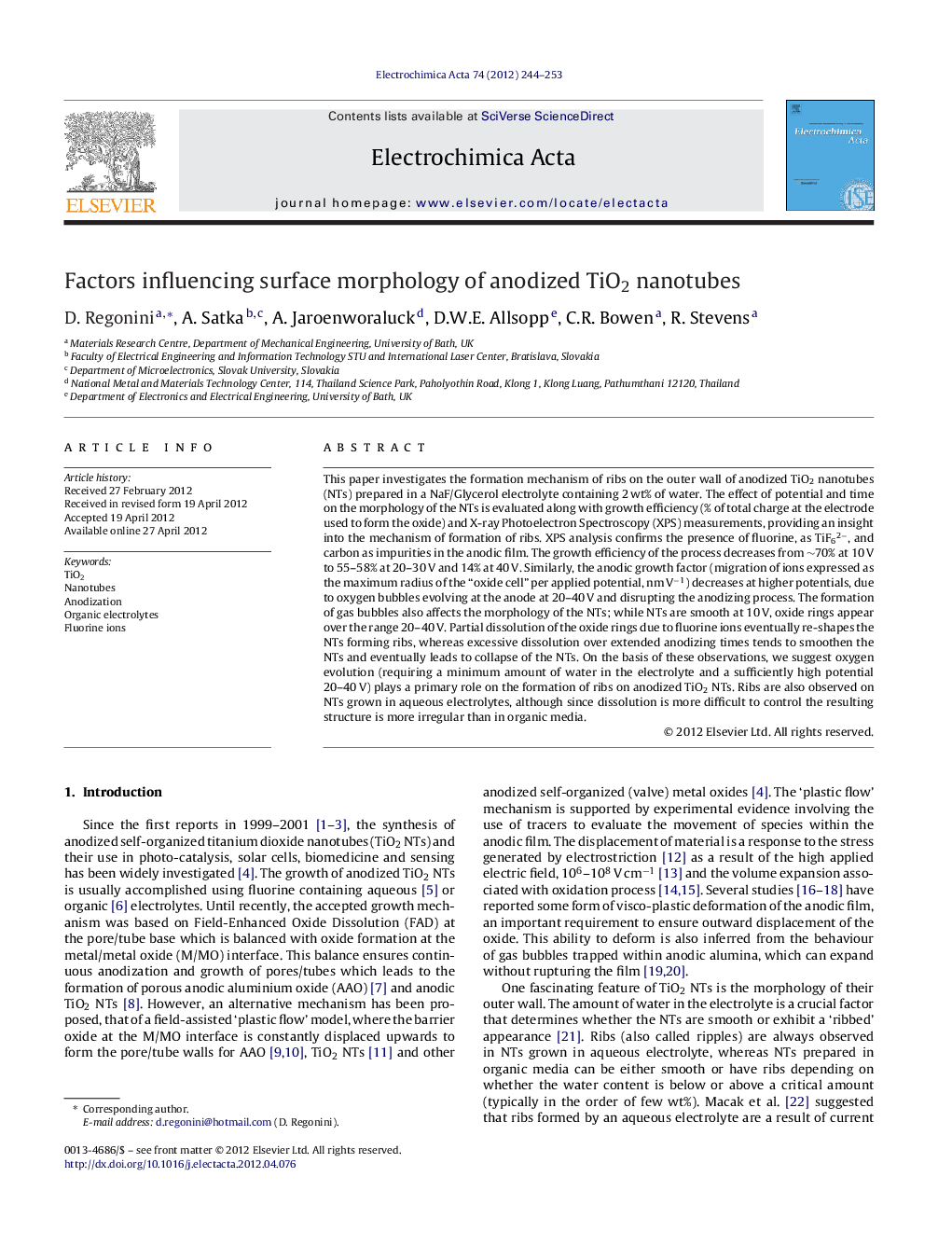| Article ID | Journal | Published Year | Pages | File Type |
|---|---|---|---|---|
| 188578 | Electrochimica Acta | 2012 | 10 Pages |
This paper investigates the formation mechanism of ribs on the outer wall of anodized TiO2 nanotubes (NTs) prepared in a NaF/Glycerol electrolyte containing 2 wt% of water. The effect of potential and time on the morphology of the NTs is evaluated along with growth efficiency (% of total charge at the electrode used to form the oxide) and X-ray Photoelectron Spectroscopy (XPS) measurements, providing an insight into the mechanism of formation of ribs. XPS analysis confirms the presence of fluorine, as TiF62−, and carbon as impurities in the anodic film. The growth efficiency of the process decreases from ∼70% at 10 V to 55–58% at 20–30 V and 14% at 40 V. Similarly, the anodic growth factor (migration of ions expressed as the maximum radius of the “oxide cell” per applied potential, nm V−1) decreases at higher potentials, due to oxygen bubbles evolving at the anode at 20–40 V and disrupting the anodizing process. The formation of gas bubbles also affects the morphology of the NTs; while NTs are smooth at 10 V, oxide rings appear over the range 20–40 V. Partial dissolution of the oxide rings due to fluorine ions eventually re-shapes the NTs forming ribs, whereas excessive dissolution over extended anodizing times tends to smoothen the NTs and eventually leads to collapse of the NTs. On the basis of these observations, we suggest oxygen evolution (requiring a minimum amount of water in the electrolyte and a sufficiently high potential 20–40 V) plays a primary role on the formation of ribs on anodized TiO2 NTs. Ribs are also observed on NTs grown in aqueous electrolytes, although since dissolution is more difficult to control the resulting structure is more irregular than in organic media.
